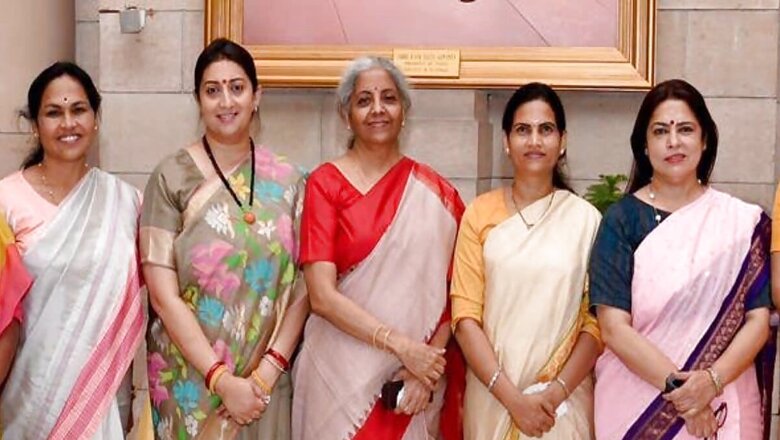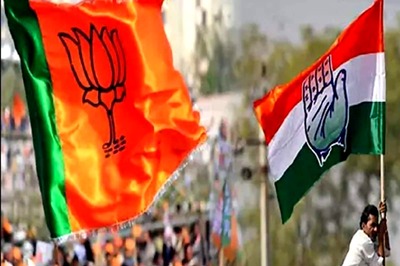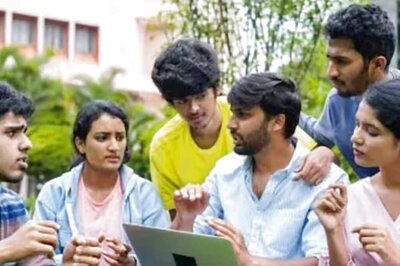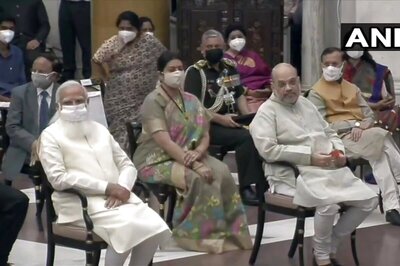
views
While India’s political history is relatively new in comparison to many other nations—marking its beginning only in 1947—it is well known as one of the earliest countries to grant women the right to vote, taking the step right after its independence. The legislators and policymakers in fact came to a consensus about granting women the right to vote without much discussion and by 1950, the law regarding women’s suffrage was included as a part of the Indian constitution, legally allowing women to vote.
It was these efforts—along with rising awareness about women’s agency— that ultimately sparked political aspirations among Indian women, urging them to join politics and become an integral part of decision-making processes across broad issues such as health, education, economics, women’s empowerment, etc. Ever since, India has seen multiple female heads of state and a progressive as well as highly diverse political past and present.
Yet, like any other field and space, even the political sphere in India has long been a male bastion in which women have rarely been able to gain an equal footing. Even in cases where women leaders have been able to overcome obstacles like patriarchal norms and societal pressure to enter electoral politics, they have continuously been discouraged by misogynistic attitudes, institutional discrimination and character assassination. As a result, women have routinely been demotivated to join politics and have, in fact, largely been kept out of political decision-making.
Things, however, began to change with the PM Modi-led Bharatiya Janta Party (BJP) coming into power, which not only undertook conscious efforts to increase women’s participation and representation in Indian politics but also placed the empowerment of women and harnessing their talent for nation building as a central component of the party’s policy.
In fact, shortly after its victory, the BJP government went out of its way to enlarge women’s role in the highest rungs of decision-making processes, bringing about a considerable increase in the total number of female contestants, which rose from 45 in 1957 to 668 in 2015. It is important to note here that this was a fifteen-fold increase in the number of female contestants. Meanwhile, the number of male contestants for the same years increased only five-fold, rising from 1,474 to 7,583.
Then in 2019, the BJP sent the largest number of elected women representatives—with 40 women MPs—to the Lok Sabha because of the sheer size of its victory. At 78 elected women MPs, the 17th Lok Sabha today, in fact, comprises the highest number of women representatives—accounting for 14.6 percent of the entire strength—in the lower house of India’s parliament. This is not only the highest-ever composition of female MPs, rising substantially from a mere 5 percent in 1952 but also the strongest progression rate of that number since 1984 at plus 3 percentage points.
Apart from the increase in representation, the women voters’ turnout in 2019 stood at 67.18 percent, which was nearly 0.17 percent greater than the male voter turnout, thereby, marking a historic moment since it was the first time after India’s independence that women had outshone the men in terms of voting turnouts. This was perhaps a pivotal moment in Indian politics since more and more women began playing a major role in choosing the representatives that they deemed fit for the nation.
Furthermore, as of today, PM Modi’s cabinet consists of eleven women—the highest number of women ministers in the Union government—which accentuates the rise of women in Indian politics. The BJP has given notable posts to women, appointing them as Minister of Defence, Finance, Commerce and Industry, etc—all of which can be considered as extremely masculinised sectors—clearly demonstrating its confidence in Indian women.
Thus, there remains no doubt that by providing these women access to such strong political positions, the PM Modi-led government has definitely given Indian women the authority to represent their gender and views—at a national level—in the Indian parliament. Going a step ahead, the Modi government recently chose Draupadi Murmu as its presidential nominee, which resulted in her becoming the first tribal woman to be elected as President of India.
And in observation of the practice where decision-making for Elected Women Representatives (EWRs) of Panchayats had continued to be driven by male family members, predominantly, owing to the lack of training provided to female representatives, the Ministry of Women and Child Development—under the BJP government—launched a nationwide training programme for EWRs with the objective to enhance their capacity, capability and skill in governance and administration of villages.
Extrapolating from these examples, it would be fair to state that the policy interventions undertaken by the BJP government have equipped and empowered women to take on leadership roles in their communities, organisations as well as households, thereby, stepping their foot into politics—an area that initially seemed out of their reach. This is a clear departure from the mere tokenism practices that were adopted by the earlier governments. But what the party does in terms of the Women’s Reservation Bill, which seeks to reserve 33 percent of seats for women in the Lok Sabha and the State Legislative Assemblies, remains to be seen.
The writer is a Visiting Fellow with the Observer Research Foundation. Some of her works have appeared in South China Morning Post, The Hindu, Firstpost, Hindustan Times, The Diplomat, The Toronto Star, among several others. She tweets at @akankshakhullar. Views are personal.



















Comments
0 comment